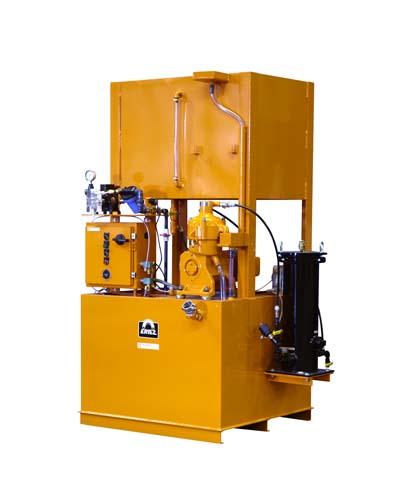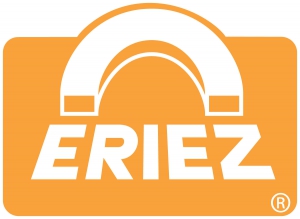
The Eriez HydroFlow line of Coolant Recycling Systems (CRS) can recycle any water-miscible fluid to its maximum potential, minimize or eliminate disposal and reduce usage of the fluid concentrate. The four models available in the Eriez CRS line all help to improve plant productivity and profitability.
Systems ranging from small to large feature low maintenance, unattended operation and fast return on investment. Coolant Recycling System features and options include:
Separate dirty and clean tanks
Automatic proportioned mixer -coolant make-up and control
Coalescer oil removal device to eliminate free-floating non-emulsified tramp oil or liquid-from-liquid high speed centrifuge to clean coolant to 0.5 percent of emulsified tramp oils and 2-5µm of particulate matter
Optional:
Pure water sources – reverse osmosis systems or deionization systems
Charger tank sizes
Clean coolant distribution pump systems
The four models of Eriez HydroFlow Coolant Recycling Systems include the following:
CRS 120SS is designed for plants operating with one coolant and total coolant sump capacity not exceeding 2,500 US gallons (9,300 liters). This model features side-by-side 120-gallon (455 liter) dirty coolant tank and 160-gallon (600 liter) clean coolant tank. The Coalescer removes tramp oil at the rate of two gallons per minute (7.5 liters per minute). High-speed centrifuge is optional.
CRS 120ST is also built for plants operating with one coolant and total coolant sump capacity not exceeding 2,500 US gallons (9,300 liters). This model features a stacked 120-gallon (455 liter) dirty coolant tank and 160-gallon (600 liter) clean coolant tank. The true high-speed centrifuge requires only one pass through the system to remove tramp oils, particulate matter and a substantial portion of the bacterial population. Cleaning the fluid to this degree eliminates the need for expensive, energy-intensive coolant pasteurization.
CRS300SS is a complete, full capability single product coolant recycling system for medium-to-large metalworking plants with recycling with up to 10,000 gallons (37,854 liters) of total sump capacity. This unit features a 300- gallon (1,140 liter) dirty coolant tank and 450-gallon (1,700 liter) clean coolant tank. The true high-speed centrifuge requires only one pass through the system to remove tramp oils, particulate matter and a substantial portion of the bacterial population.
CRS 300ST is designed for plants operating with one coolant and total sump capacities not exceeding 5,000 U.S. gallons (18,900 liters). This model features a stacked 300-gallon (1,140 liter) dirty coolant tank and 450-gallon (1,700 liter) clean coolant tank. An optional dual product design, referred to as the CRS 200/200 ST, features two dirty and two clean tanks for facilities using two different metalworking fluids.
Contact Details
Related Glossary Terms
- centrifuge
centrifuge
Filtering device that uses a spinning bowl and the differences in specific gravities of materials to separate one from another. A centrifuge can be used to separate loosely emulsified and free oils from water-diluted metalworking fluid mixes and to remove metalworking fluids from chips.
- coolant
coolant
Fluid that reduces temperature buildup at the tool/workpiece interface during machining. Normally takes the form of a liquid such as soluble or chemical mixtures (semisynthetic, synthetic) but can be pressurized air or other gas. Because of water’s ability to absorb great quantities of heat, it is widely used as a coolant and vehicle for various cutting compounds, with the water-to-compound ratio varying with the machining task. See cutting fluid; semisynthetic cutting fluid; soluble-oil cutting fluid; synthetic cutting fluid.
- deionization
deionization
Removal of ions from a water-based solution. See semisynthetic cutting fluid; soluble-oil cutting fluid; synthetic cutting fluid.
- metalworking
metalworking
Any manufacturing process in which metal is processed or machined such that the workpiece is given a new shape. Broadly defined, the term includes processes such as design and layout, heat-treating, material handling and inspection.
- tramp oil
tramp oil
Oil that is present in a metalworking fluid mix that is not from the product concentrate. The usual sources are machine tool lubrication system leaks.

